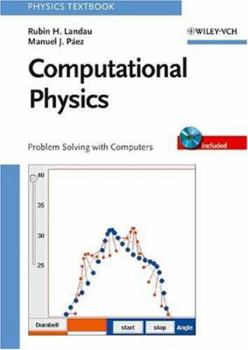Computational Physics: Problem Solving with Computers
Select Format
Select Condition 
Book Overview
Computational physics is the process by which computers help solve problems in the physical sciences where the difficulty or complexity places them beyond analytical solution or human endurance. This text explains to the reader how to program the hardware or use program libraries to solve specific problems occurring in the physical sciences.
Format:Hardcover
Language:English
ISBN:0471115908
ISBN13:9780471115908
Release Date:August 1997
Publisher:Wiley-VCH
Length:548 Pages
Weight:2.05 lbs.
Dimensions:9.7" x 1.3" x 7.0"
Related Subjects
Mathematical Physics Physics Science Science & Math Science & Scientists Science & TechnologyCustomer Reviews
1 rating
This book is for advanced physics
Published by Thriftbooks.com User , 25 years ago
The number of stars I gave the book is basically irrelevant.I'm writing the review to point out that the book should be called: "computations for *advanced* physics".Most of the topics covered in the book are for second year physics, or advanced topics. That's neither good nor bad, it just depends what you're looking for. If you want to find ways to apply computer programs in a first-years course -- this ain't it. There are probably only a few cases in which the topics are close enough to first-year physics to be relevant (multiple waves on a string; contrasting an idealized model of a pendulum with a "real-one").Having said that, I give the book some pluses for covering a wide range of physics and mathematical topics, and a bit of a minus for writing that can be fairly opaque.






